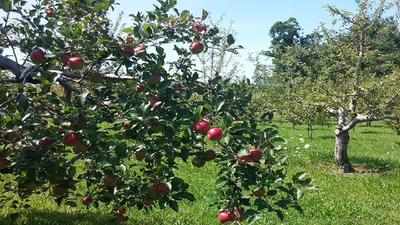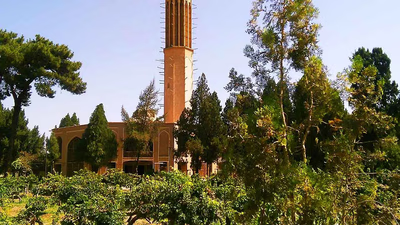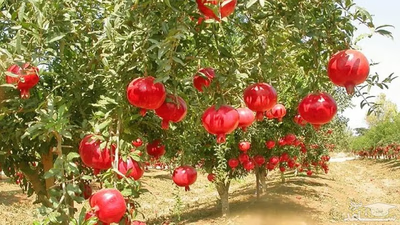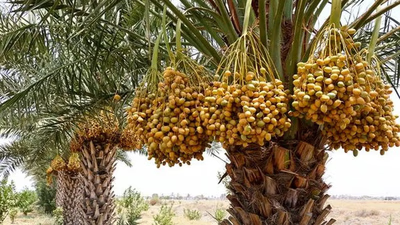
Innovative gardening techniques enhance fruit production in arid regions.
In the hot, dry, desert and desert areas of the Middle East , which face water shortages, fruit gardens are created in various shapes and models to provide the best use of limited water resources. In areas with water shortage, the use of drip irrigation systems is common. In this system, less water is consumed and it is irrigated directly near the roots of the plants. In these areas, fruits that can withstand drought conditions are usually selected. Some examples are pomegranates, barberries, dates, hazelnuts, pistachios, figs, and grapes.
In some areas, systems such as dams, wetlands, and water storage ponds are used to collect and store water. These waters are used as a source of irrigation for gardens in dry seasons. In dry areas, it is common to use methods such as covering the soil with organic materials, using compost, and planting cover plants to maintain soil moisture. These methods reduce water evaporation from the soil and reduce irrigation. In hot and dry gardens, it is common to plant shade trees such as palm trees to protect other plants from the harsh sun and reduce evaporation.
In some areas, the use of advanced technologies such as hydroponic systems (planting without soil) and smart greenhouses are used to grow fruits. These technologies provide optimization of water consumption, precise control of irrigation, regulation of temperature and humidity of the environment, as well as increase of crop yield. Orchards are formed in the hot and dry and desert regions of the Middle East based on limited water resources and different weather conditions. These gardens are done in order to make optimal use of water, using plants resistant to dry conditions, efficient irrigation systems and advanced technologies. Garden buying and selling market in arid and desert areas of West Asia may be affected by local conditions, local laws and other factors.
The type of garden and the type of products produced in it have a great influence on the price and marketability of the garden. Some common products in the dry and desert regions of West Asia include grapes, pomegranates, olives, dates, pistachios and saffron. Orchards that produce products with high marketability and reasonable prices may be worth more. The area of the garden and its geographical location is also an important factor in determining the price and marketability. Larger gardens are usually more valuable, but proximity to consumer markets and easy access to water sources are also important. In dry and desert areas, the presence of acceptable irrigation sources is one of the key factors for the production of fruit crops.
Gardens that have access to reliable and efficient irrigation sources may be more valuable and more attractive to buyers. The existence of a suitable market for the sale of garden products is also one of the important factors in determining the price and marketability of the garden. Orchards located near consumer markets and easily able to supply their produce may be more valuable. Local factors such as local laws and regulations, government policies, water supply, infrastructure development, and economic developments can affect the garden market.
-

Attracting foreign buyers to orchards requires a strategic approach that combines effective marketing, comprehensive information dissemination, and networking. Key methods include utilizing both online and offline marketing channels, engaging with real estate agencies, and participating in horticultural exhibitions. Providing detailed information about the orchards to potential buyers is crucial for successful transactions. Additionally, advertising in foreign media can enhance visibility among international audiences. Collaborating with local agents in target countries can facilitate access to foreign buyers and streamline the sales process. Offering tourism-related services can further entice buyers by enhancing their experience. It"s important to navigate the varying legal frameworks regarding foreign ownership of orchards in Middle Eastern countries, as regulations differ significantly across the region. Some nations have relaxed restrictions to attract investment, while others maintain stringent laws that may require special permits for foreign buyers.
Overall, a well-rounded marketing strategy that includes building an online presence and leveraging social networks is essential for successfully selling or renting orchards to international clients. "
-

In the arid regions of the Middle East, gardens are strategically designed to optimize limited water resources. Drip irrigation systems are prevalent, allowing for efficient water use by delivering moisture directly to plant roots. Drought-resistant fruits such as pomegranates, dates, and figs are commonly cultivated. Water conservation techniques, including soil coverage with organic materials and composting, help maintain soil moisture and reduce evaporation. Advanced technologies like hydroponics and smart greenhouses further enhance water management and crop yields. The market for garden products in West Asia is influenced by local conditions, laws, and the types of produce grown. High-value crops like saffron and olives can significantly impact a garden"s marketability. Factors such as garden size, geographical location, access to irrigation sources, and proximity to consumer markets play crucial roles in determining value.
Reliable irrigation is essential for successful fruit production in these regions. Additionally, local regulations and economic developments can shape the dynamics of the garden market. "
-

Gardening holds significant cultural value in the Arab and Muslim communities of West Asia, serving as a source of relaxation, physical activity, and social interaction. It is a cherished pastime for retirees, allowing them to cultivate plants while enjoying nature and engaging with others in gardening groups. Beyond personal enjoyment, horticulture plays a crucial role in the region"s economy by providing food and employment opportunities. The Middle East has a long history of agriculture, with traditional practices evolving over thousands of years to optimize crop cultivation. Gardens not only supply essential nutrition but also contribute to economic development through related industries such as food processing and export. Additionally, gardens serve as social spaces for gatherings and celebrations, symbolizing wealth and prosperity in some cultures. Overall, gardening is integral to the lifestyle and economy of West Asia, promoting health, community bonding, and cultural heritage. "
-

The Middle East offers lucrative opportunities for investing in orchards, particularly in countries like Iran, Turkey, Lebanon, Jordan, and Oman. Key factors for successful investment include geographical location, soil quality, reliable irrigation sources, and proximity to consumption markets. Fertile soil with proper drainage and ventilation is essential for fruit cultivation. Diversification of fruit products can mitigate risks associated with market fluctuations and weather conditions. Each country has unique advantages: Iran boasts a variety of fruits such as apples and dates; Turkey is known for its olives and grapes; Lebanon produces cherries and olives; Jordan excels in dates and lemons; while Oman offers diverse fruits like oranges and hazelnuts. Understanding local market demands is crucial for maximizing returns on investment. Additionally, professional management in horticulture practices enhances the success rate of orchard investments. The potential for exporting these fruits further increases the attractiveness of investing in these regions.




